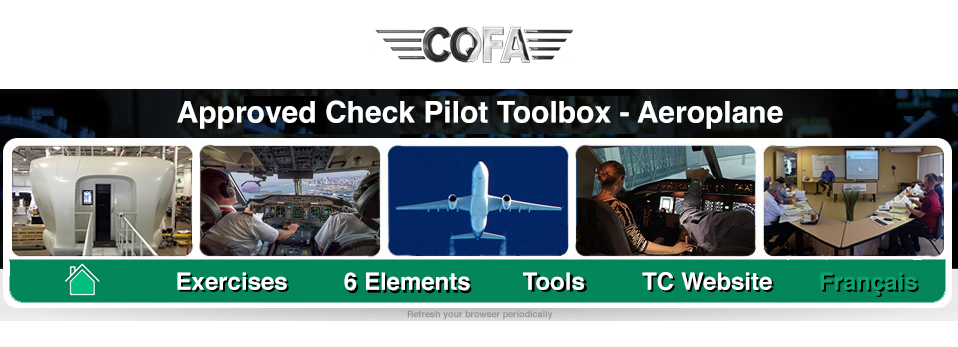8. Initial climb (ICL)
Aim
Determine the candidate’s ability to comply with initial climb departure procedures and enroute departure procedures as cleared.
Description
The candidate will complete the initial climb procedures, the departure procedures, as cleared, in accordance with the Visual or Instrument Flight Rules, as applicable. In addition, the candidate will demonstrate the proper programming and use of Flight Management Systems as applicable.
Performance Criteria
(06/2017 FTG p.25) Assess the candidate’s ability to:
- transition smoothly and accurately from visual meteorological conditions to actual or simulated instrument meteorological conditions, where applicable;
- monitor powerplant controls, settings, and instruments during the initial climb to ensure all predetermined parameters are maintained;
- adjusts the controls to attain the desired pitch attitude at the predetermined airspeed/V-speed to attain the desired performance for the particular takeoff and climb segment;
- perform the required pitch changes and, as appropriate, performs or calls for and verifies the accomplishment of, gear and flap retractions, power adjustments, and other required pilot-related activities at the required airspeed/Vspeeds within the tolerances established in the POH or AFM and SOP’s;
- use the applicable noise abatement and wake turbulence avoidance procedures, as required;
- accomplish or call for and verify the accomplishment of the appropriate checklist items;
- maintain the desired heading within ±10° and the desired airspeed/V-speed within +10/-5 knots or the appropriate Vspeed range; and
- comply with ATC clearances and instructions issued by ATC (or the examiner simulating ATC).
Commenting a "1"
- Descended from ____ to _____ feet during initial climb, before resuming the climb.
- Loss of ______ kts for ______ seconds due to inadequate aircraft handling/use of automation.
- Inadequate use of engine thrust during initial climb, not corrected before....... (details)
- Aircraft pitch maintained at _____ degrees instead of SOP’s ______ degrees resulting in decreased climb performance and a breach of noise abatement procedure.
- Did not comply with noise abatement rwy _____. Initiated turn at ______ feet instead of the published _______ feet.
- Maintained the aircraft below wake turbulence avoidance flight path, and encountered moderate turbulence throughout the initial climb.
- Lack of cockpit discipline generated confusion and unnecessary talking. Did not maintain sterile cockpit as per SOP.
- Did not maintain required speed. Deviations as much as +_____ knots observed.
- Did not comply with ATC instruction generating ATC call for immediate action.
- Incorrect/incomplete ATC communication and/or missed calls prompting ATC to ask for immediate corrective action.
- Did not call for/perform required checklists.
- Did not follow SID profile.
- Incorrect automation mode throughout climb.
Commenting a "2"
- Climb VSI variations observed due to poor aircraft handling technique. Corrected after prompting from other crewmember.
- IAS deviations observed as a result of incorrect automation mode selection. Corrected after prompting by other crewmember.
- Kept shallow climb instead of levelling off at TOCA, delaying Power Loss checks.
- Slow to adjust engine power settings resulting in airspeed variations.
- Unwanted pitch variations observed during climb resulting a decreased climb performance. Corrected by using _______ automation mode.
- Deviated from noise abatement/SID/profile, but corrected after advising ATC accordingly.
- Unwanted discussion in cockpit resulted in profile deviations. Profile corrected after ATC call and silence in the cockpit thereafter.
- Speed variations (+____ kts, - ____ kts) observed while working through landing gear malfunctions. Corrected upon gear up.
- Incorrect ATC communication technique lead to profile deviations. Corrected after new ATC clearance.
- Wrong checklist called for, but corrected by other crewmember.
- Slow to comply with SID/profile requiring a call to ATC to advise of the situation.
- Incorrect automation mode selected leading to speed deviation. Perceived and corrected by selecting the correct mode (_______).
